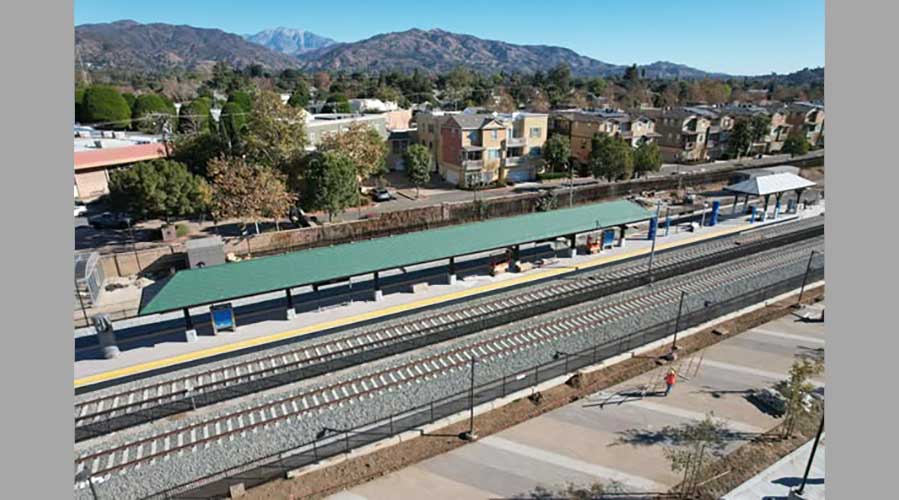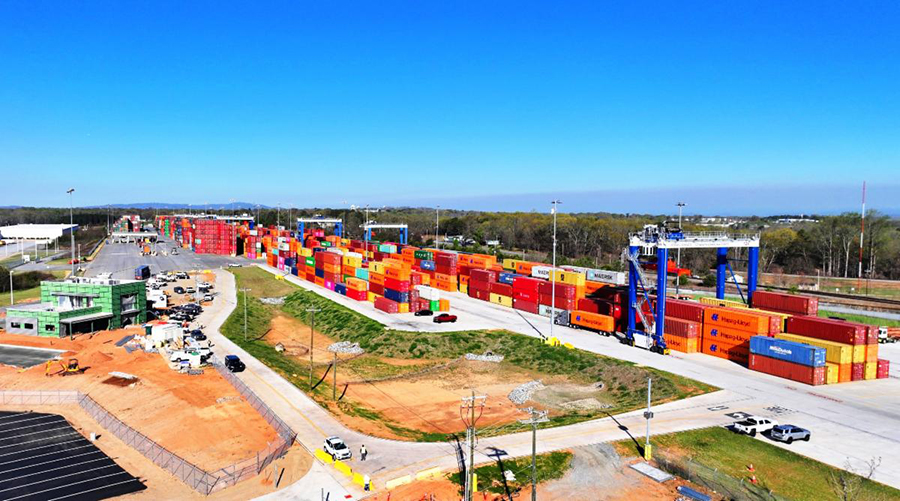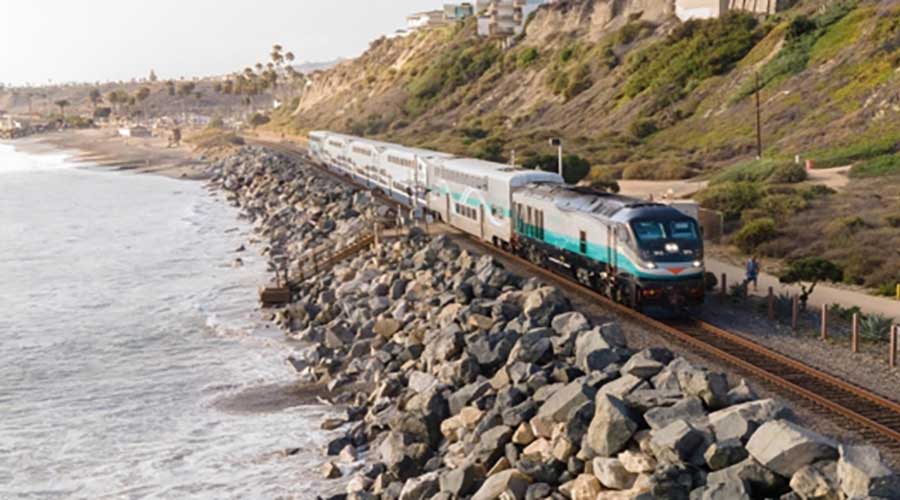Newsletter Sign Up
Stay updated on news, articles and information for the rail industry
Stay updated on news, articles and information for the rail industry
Rail News Home
High-Speed Rail
Rail News: High-Speed Rail
4/19/2011
Rail News: High-Speed Rail
California legislators propose CHSRA streamline Bay Area segment with Caltrain system; Caltrain to study electrification, integration feasibility
advertisement
With limited state and federal funding available to build a statewide high-speed rail system, California legislators are asking the California High-Speed Rail Authority (CHSRA) to reexamine its plans for the Peninsula and San Francisco Bay Area.
Yesterday, state Sen. Joe Simitian, Congresswoman Anna Eshoo and Assemblyman Rich Gordon issued a statement saying they want to see “high-speed rail done right,” with a statewide system that “makes prudent use of limited public funds and which is responsive to legitimate concerns about the impact of high-speed rail on our cities, towns, neighborhoods and homes.”
The legislators are proposing the CHSRA abandon its proposal to build elevated tracks for dedicated high-speed rail service between San Francisco and San Jose, and instead integrate the high-speed system with Caltrain’s existing commuter-rail system. The authority plans to build “what is essentially a second rail system for the Peninsula and South Bay,” and “we do not believe the cost of such duplication can be justified,” the legislators said in a prepared statement.
Instead, high-speed trains could operate along the same right of way as a “21st Century Caltrain,” which would feature electrification, positive train control, new rolling stock and other upgrades, according to the statement. The single, blended system would maintain projected speeds and travel times for high-speed rail, the legislators said.
For its part, Caltrain announced yesterday it plans to conduct a series of feasibility studies to determine whether electrifying and modernizing its commuter-rail system could meet its future operational needs, while also accommodating initial high-speed rail operations on the Peninsula corridor.
In 2009, after billions of dollars in state and federal high-speed rail funding were approved, Caltrain collaborated with CHSRA to plan, design and construct the project between San Franvisco and San Jose. However, after CHSRA selected the Central Valley as the high-speed system’s construction starting point in 2010, Caltrain announced it would reexamine the approach and called on the authority to revise its planning process to study the concept of a phased implementation.
Under a phased approach, Caltrain would first electrify its system and potentially allow CHSRA to operate enough service to meet initial ridership demand. Subsequent phases would expand system capacity to meet additional ridership demand if needed.
In addition to the feasibility studies, Caltrain will need to develop ridership projections, service plans, cost estimates and impact analyses. The results would be included in the high-speed rail draft environmental document scheduled to be released in fall 2012.
With no dedicated revenue source and a year-to-year structural operating deficit, Caltrain has struggled to maintain existing service. Modernizing the system will enable the agency to improve operations and create a more sustainable financial structure, according to a press release. A modernized system would attract more riders and could help reduce Caltrain’s operating deficit by 45 percent by 2019, the agency said.
Yesterday, state Sen. Joe Simitian, Congresswoman Anna Eshoo and Assemblyman Rich Gordon issued a statement saying they want to see “high-speed rail done right,” with a statewide system that “makes prudent use of limited public funds and which is responsive to legitimate concerns about the impact of high-speed rail on our cities, towns, neighborhoods and homes.”
The legislators are proposing the CHSRA abandon its proposal to build elevated tracks for dedicated high-speed rail service between San Francisco and San Jose, and instead integrate the high-speed system with Caltrain’s existing commuter-rail system. The authority plans to build “what is essentially a second rail system for the Peninsula and South Bay,” and “we do not believe the cost of such duplication can be justified,” the legislators said in a prepared statement.
Instead, high-speed trains could operate along the same right of way as a “21st Century Caltrain,” which would feature electrification, positive train control, new rolling stock and other upgrades, according to the statement. The single, blended system would maintain projected speeds and travel times for high-speed rail, the legislators said.
For its part, Caltrain announced yesterday it plans to conduct a series of feasibility studies to determine whether electrifying and modernizing its commuter-rail system could meet its future operational needs, while also accommodating initial high-speed rail operations on the Peninsula corridor.
In 2009, after billions of dollars in state and federal high-speed rail funding were approved, Caltrain collaborated with CHSRA to plan, design and construct the project between San Franvisco and San Jose. However, after CHSRA selected the Central Valley as the high-speed system’s construction starting point in 2010, Caltrain announced it would reexamine the approach and called on the authority to revise its planning process to study the concept of a phased implementation.
Under a phased approach, Caltrain would first electrify its system and potentially allow CHSRA to operate enough service to meet initial ridership demand. Subsequent phases would expand system capacity to meet additional ridership demand if needed.
In addition to the feasibility studies, Caltrain will need to develop ridership projections, service plans, cost estimates and impact analyses. The results would be included in the high-speed rail draft environmental document scheduled to be released in fall 2012.
With no dedicated revenue source and a year-to-year structural operating deficit, Caltrain has struggled to maintain existing service. Modernizing the system will enable the agency to improve operations and create a more sustainable financial structure, according to a press release. A modernized system would attract more riders and could help reduce Caltrain’s operating deficit by 45 percent by 2019, the agency said.


 LRW Honors Amtrak’s Acheson As Railway Woman Of The Year
LRW Honors Amtrak’s Acheson As Railway Woman Of The Year
 From Editor-In-Chief Foran: Of Gender Equity And Inclusion
From Editor-In-Chief Foran: Of Gender Equity And Inclusion
 Spotlight On Some Of Today’s Rail Safety Products
Spotlight On Some Of Today’s Rail Safety Products
 Women of Influence in Rail eBook
Women of Influence in Rail eBook
 railPrime
railPrime







